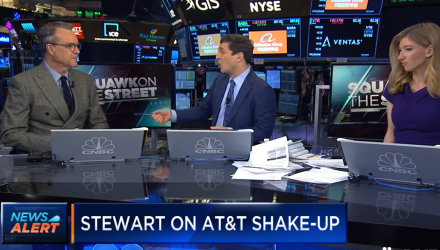Last month, a federal appeals judge gave last year’s AT&T-Time Warner deal the green light, allowing both companies to merge in what’s been an arduous process riddled with opposition from antitrust regulators.
In June 2018, the landmark $85 billion AT&T-Time Warner merger that got the green light by U.S. District Court Judge Richard Leon got a red light with the Justice Department filing an appeal, stating that the merger would decrease competition and unfairly drive up prices for consumers.
“The merger of these innovative companies has already yielded significant consumer benefits, and it will continue to do so for years to come. While we respect the important role that the U.S. Department of Justice plays in the merger review process, we trust that today’s unanimous decision from the D.C. Circuit will end this litigation,” AT&T General Counsel David McAtee said in a statement.
Following the news of the appeal last summer, McAtee was surprised by the latest development.
“The Court’s decision could hardly have been more thorough, fact-based, and well-reasoned. While the losing party in litigation always has the right to appeal if it wishes, we are surprised that the DOJ has chosen to do so under these circumstances,” McAtee said in a statement. “We are ready to defend the Court’s decision at the D.C. Circuit Court of Appeals.”
In the video below, New York Times columnist Jim Stewart joins CNBC’s “Squawk on the Street” to discuss the restructuring of WarnerMedia following the acquisition from AT&T.
For investors looking for continued upside in U.S. cyclical sectors over defensive sectors, the Direxion MSCI Cyclicals Over Defensives ETF (NYSEArca: RWCD) offers them the ability to benefit not only from cyclical sectors potentially performing well, but from their outperformance compared to defensive sectors.
Conversely, if investors believe that U.S. defensive sectors will outperform cyclical sectors, the Direxion MSCI Defensives Over Cyclicals ETF (NYSEArca: RWDC) provides a means to not only see defensive sectors perform well, but a way to capitalize on their outperformance compared to cyclical sectors.
For more market trends, visit ETF Trends

